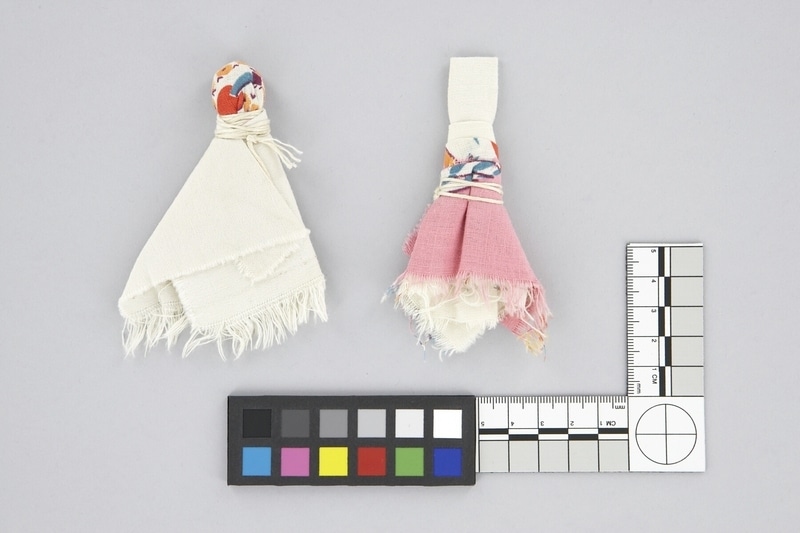Doll Item Number: A17000 a-b from the MOA: University of British Columbia


Description
Part a is a male doll and has a square head of folded off-white cloth with a skirt of white and pink cloth with a red, dark red and blue design over off-white cloth, the edges unfinished, and the skirt is bound with off-white string. Part b is a female doll with a round off-white head and a head scarf is made of white cotton with a floral pattern in pink, red, orange, green, and dark red. An off-white skirt or dress is tied just below the head with off-white string.
History Of Use
Usually girls played hwa'nukwa (to play with rags and shells for dolls) from about the ages of 6 to 12, when they were given away to younger children. Dolls were kept in a box or basket when not in use. Ones with square tops were men, ones with round tops were women. They always stood for people, never animals or myth people. Shells, mussel shells and leaves like maple were used. Names were given. They would mimick adult life and roles such as mothers, marriages, death, sometimes sitting around with shells for dishes and cups, dancing to songs, or a big feast.
Cultural Context
toys; child rearing
Item History
- Made by Bessie King (Maker) in British Columbia, Canada before 1951
- Collected in 'Yalis (Alert Bay), British Columbia, Canada during October 1951
- Owned by Bessie King
- Owned by Helen Codere before 1965
- Received from Helen Codere (Donor) during 1965
What
Who
- Culture
- Kwakwaka'wakw
- Creator
- Bessie King (Maker)
- Previous Owner
- Bessie King and Helen Codere
- Received from
- Helen Codere (Donor)
Where
- Holding Institution
- MOA: University of British Columbia
- Made in
- British Columbia, Canada
- Collected in
- 'Yalis (Alert Bay), British Columbia, Canada
When
- Creation Date
- before 1951
- Collection Date
- during October 1951
- Ownership Date
- before 1965
- Acquisition Date
- during 1965
Other
- Item Classes
- textiles
- Condition
- good
- Accession Number
- 0187/0001 a-b